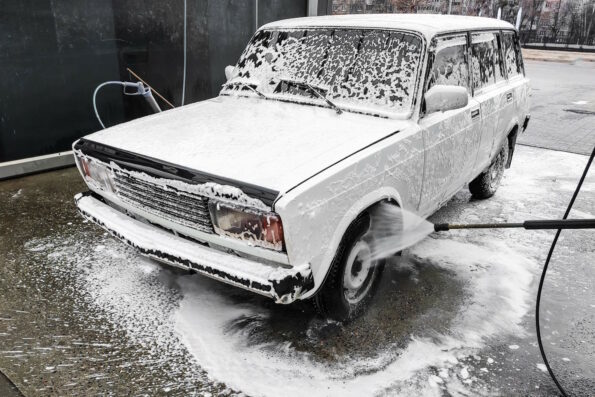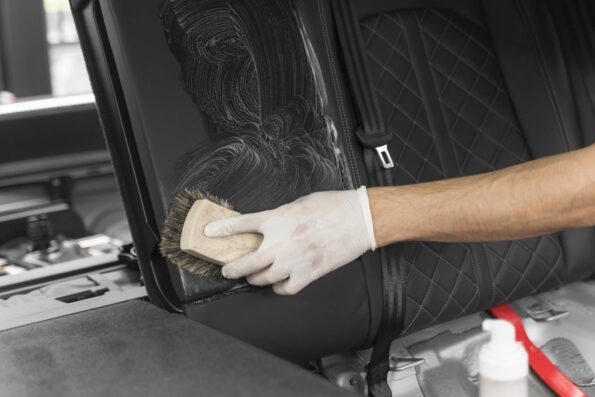Shipping a vehicle can seem like a daunting task, but once it’s left to the professionals, it’s as easy as one-two-three. However, there are some important details you don’t want to gloss over when you prepare a vehicle for shipping.
1. Wash your vehicle
The first step in preparing your vehicle for shipping is to wash it. While it may seem unnecessary, it will make your life a lot easier (or whoever is receiving the vehicle) when they receive the vehicle.

The reason you want to wash your vehicle is so you have a record of what the car looks like before handing it over, this way, you won’t have any discrepancies if you decide to claim for damage at a later date.
This is also necessary as many countries have biosecurity regulations that may reject the vehicle if it is deemed unfit upon arrival. Always check with the receiving country what their biosecurity regulations are just to make sure there aren’t any issues when the vehicle is received. They may require it to be steam cleaned.
2. Take pictures of the car
Before handing over your vehicle for transport, you’ll want to take pictures of your washed vehicle from all angles. Keep them dated for your documentation so that if a claim is required at a later date, you have evidence of the shape your vehicle was in.
It’s also important to have the transportation company sign off on the pictures as well so there aren’t any arguments later. While it’s rare, accidents do happen, even when transporting vehicles. It’s always better to be safe than sorry.
3. Clean the inside of the vehicle
Anything on the inside that can move around within the vehicle should be removed. It’s also a good time to give the inside of your vehicle a good clean.

Don’t leave unsecured items in the boot of the vehicle either, as you don’t want them banging around during shipment. These include things like the jack and tyre iron.
Anything that is unsecured in the cabin of your vehicle will need to be removed or made secure. On the off-chance something comes loose, it has the potential to break a window. You can stash these in the glove compartment but don’t keep any valuables within the vehicle as it is not covered under insurance.
4. Check the battery, fluid and tyres
The battery must be secured, and you want to ensure that the fluid levels are between the minimum and maximum levels for brakes, coolant, engine oil and transmission oil. The tyres should be inflated so that the driver can drive the vehicle onto and off the trailer that it’s going to be transported on.
5. Check for any leaks
If your vehicle is not in a condition to be driven, you’ll need to let your transport service know. A well-versed transport company like A1 Auto Transport can handle cars that aren’t able to be driven, but there is an extra fee for this service.
6. Empty the petrol tank to 1/4th capacity
Depending on the transport company, you’ll be required to empty the petrol tank to around 1/4th to 1/8th capacity. Check with what your transport company recommends, and then do as they say. If not, any spare fuel must be disposed of an approved disposal site. Check with your local council for details.
7. Hand off the vehicle for inspection
It’s important that before you hand over your vehicle, you do a last-minute check. Look for any valuables you may have forgotten within the interior of the vehicle, and even check the boot. You don’t want to leave anything that may be stolen, as these items will not be covered by insurance.
Go over the inspection checklist to see if it matches the condition of your vehicle. You do not want your vehicle to be marked for significant damages and then have no recourse later, you can decide to cancel the transport if you feel that the inspection is not going over smoothly. Do note however there may be a penalty fee here if the payment was done upfront, but don’t put down any deposit until everything has been signed off on.
All that’s left to do is hand over the keys to your transport company and let them do the rest.
Conclusion
While shipping a vehicle can be easy once you work with the right transport company, it’s paramount that you take the time to prepare for any accidents that may occur. Keeping your valued possessions with you is also important, as the items within the vehicle will not be insured.
It’s also a good idea to take time to research a reputable transportation company so you don’t deal with bait-and-switch tactics or no-shows, which do happen often. Check with your local Department of Transport in your state to help alleviate any doubts you have about working with the transport company in question, and ensure that you’ve met any compliance requirements.
